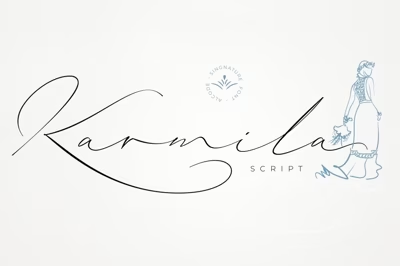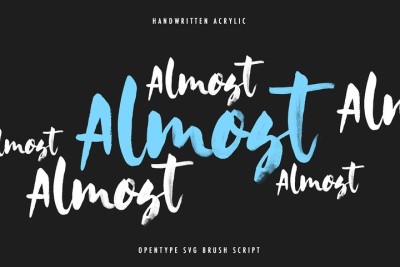Open Source Fonts vs. Premium Fonts: Pros and Cons
Open Source Fonts vs. Premium Fonts: Pros and Cons
When it comes to choosing fonts for a project, one of the biggest decisions you’ll make is whether to go with open-source fonts or premium fonts. Both types offer unique benefits, but there are also some trade-offs. Whether you're designing for the web, a mobile app, or print media, understanding the pros and cons of each can help you make a more informed choice for your next project.
In this post, we’ll dive into the differences between open-source and premium fonts, comparing their cost, quality, flexibility, and licensing. By the end, you’ll have a clearer idea of which type of font is best suited for your specific needs.
Cost Comparison: Open Source vs. Premium Fonts
Open Source Fonts
Pros:
-
Free to Use: The most obvious advantage of open-source fonts is that they are free. You can use them in personal or commercial projects without worrying about licensing fees.
-
No Hidden Costs: Once downloaded, you own the font outright. There’s no ongoing subscription or extra cost for future updates.
Cons:
-
Limited Variety: While there are plenty of high-quality open-source fonts available, the selection may be more limited compared to premium fonts. The overall range of styles and refined quality might not match the premium options.
Ideal for: Independent designers, small businesses, or personal projects where cost is a major concern.
Premium Fonts
Pros:
-
High Quality and Uniqueness: Premium fonts are often designed by professional type foundries and are typically more polished and unique compared to open-source fonts. They offer a level of sophistication and attention to detail that is hard to find in free fonts.
-
Exclusive Rights: Many premium fonts come with exclusive rights, which means the likelihood of your font being used by others is much lower.
Cons:
-
Initial Cost: Premium fonts come with an upfront cost, which can vary depending on the type foundry, the font family, and the licensing agreement. Some fonts may cost $50 or more for a single style, while some could even be in the hundreds of dollars.
-
Ongoing Costs: If the font comes with an ongoing subscription or requires renewal fees for updates or additional weights, this can be an extra burden in the long run.
Ideal for: Professional designers, large corporations, and brands that require exclusive and high-quality fonts for commercial use.
Design Flexibility: Open Source vs. Premium Fonts
Open Source Fonts
Pros:
-
Wide Range of Styles: Open-source fonts, especially those hosted on platforms like Google Fonts or Font Squirrel, come in a variety of styles. You can find fonts for serif, sans-serif, display, and script, allowing for good flexibility in design.
-
Customizability: Since many open-source fonts are released with open licenses, you can often modify and adapt them to fit your specific needs.
Cons:
-
Design Limitations: Some open-source fonts are relatively basic or generic. While they might be sufficient for basic projects, they may not have the refinement or unique characteristics that you might need for a professional brand identity.
Ideal for: Websites, small businesses, and personal projects where design flexibility and freedom are important but premium customization isn't necessary.
Premium Fonts
Pros:
-
Extensive Font Families: Premium fonts usually offer full font families, meaning you get a wide range of weights, styles, and widths. This provides greater design flexibility without having to mix and match multiple different font families.
-
Professional Typography: With premium fonts, you get access to well-crafted letterforms, kerning, ligatures, and custom features designed specifically for professional use.
Cons:
-
Limited Modification: Depending on the licensing, premium fonts may not be as flexible in terms of modification. Some licenses may restrict how you can alter or distribute the font.
Ideal for: High-end branding, logo design, and professional publications where font quality and design flexibility are essential.
Licensing: Open Source vs. Premium Fonts
Open Source Fonts
Pros:
-
Free License: Open-source fonts typically come with licenses like the SIL Open Font License (OFL) or Apache License, which grant you the freedom to use, modify, and distribute the fonts in personal or commercial projects without the need for attribution.
-
No Restrictions: Open-source fonts are usually free from restrictive licensing, making them a great choice for freelancers or startups who need to use fonts across multiple projects without worrying about legal complications.
Cons:
-
Potential Limitations on Commercial Use: While most open-source fonts allow commercial use, some may have specific restrictions. Always check the font’s license to ensure it aligns with your project’s needs.
Ideal for: Freelancers, open-source projects, or businesses on a budget that need flexible and legal font use without licensing worries.
Premium Fonts
Pros:
-
Clear Licensing Terms: With premium fonts, the licensing is often clear and straightforward. You purchase the font with a specific usage license (e.g., web, print, or app), which means there are fewer gray areas when it comes to usage rights.
-
Extended Licensing: Many premium fonts come with extended licenses that allow you to use them in a wider range of applications (e.g., merchandise, branding, print materials, etc.).
Cons:
-
Complex Licensing Models: Some premium fonts use tiered pricing models, where the cost increases based on the type of use. For example, a font might be cheaper for personal use but cost more for commercial or extended use. Make sure to carefully read the terms to avoid unexpected fees or restrictions.
Ideal for: Large companies, agencies, or individuals who need clear and specific licensing terms for a commercial product or service.
Which One Should You Choose?
The decision between open-source fonts and premium fonts ultimately depends on your project needs. Here’s a quick comparison to help you decide:
| Factor | Open Source Fonts | Premium Fonts |
|---|---|---|
| Cost | Free | Paid |
| Quality | Generally good, but can be basic | High-quality, professional typography |
| Design Flexibility | Great variety, but sometimes basic | Extensive font families, highly customizable |
| Licensing | Free for commercial use, some restrictions | Clear and straightforward, more control |
| Best For | Freelancers, small businesses, personal projects | Branding, large corporations, high-end design |
-
Open Source Fonts are a great choice if you’re working with a limited budget, need flexibility in design, and don’t require exclusive typography.
-
Premium Fonts are ideal for projects that require professional, unique, and high-quality typography. They’re best suited for branding, high-end design projects, or companies that need guaranteed font quality and legal clarity.
Final Thoughts: Choose What Works for You
In the end, whether you choose open-source or premium fonts will depend on your design objectives and budget. If you're looking for something quick, cost-effective, and flexible, open-source fonts might be the way to go. However, if you need exclusive fonts, high-end typography, and clear legal protection, investing in premium fonts could be worth it.
Both options have their merits, so consider the specific needs of your project before making your choice. Happy designing!



